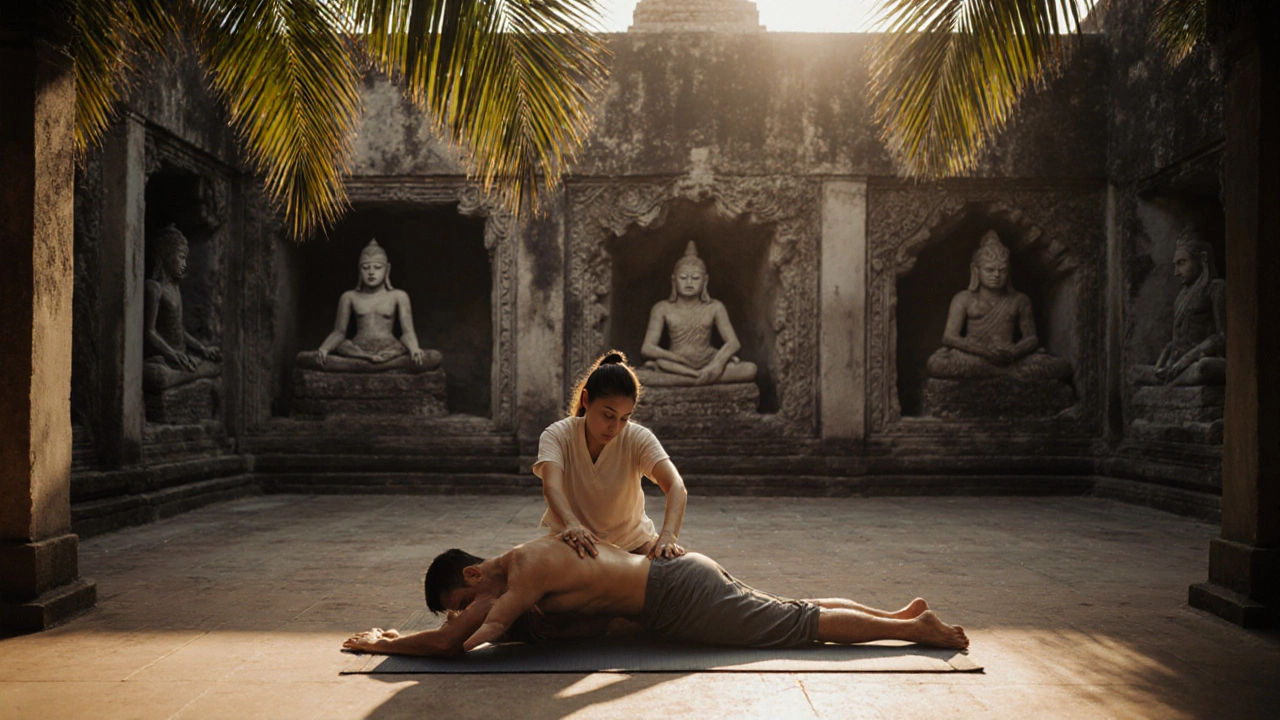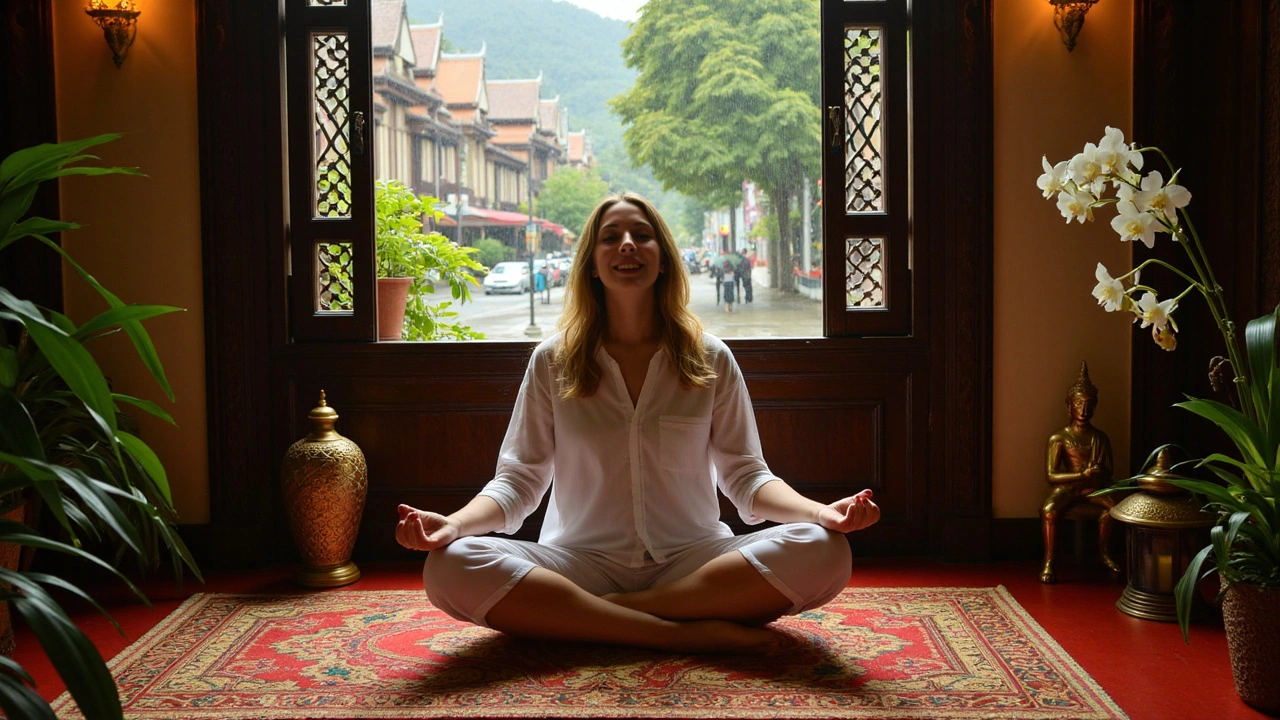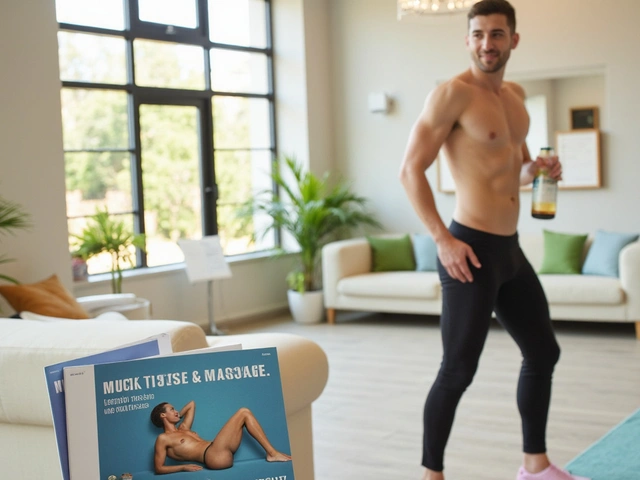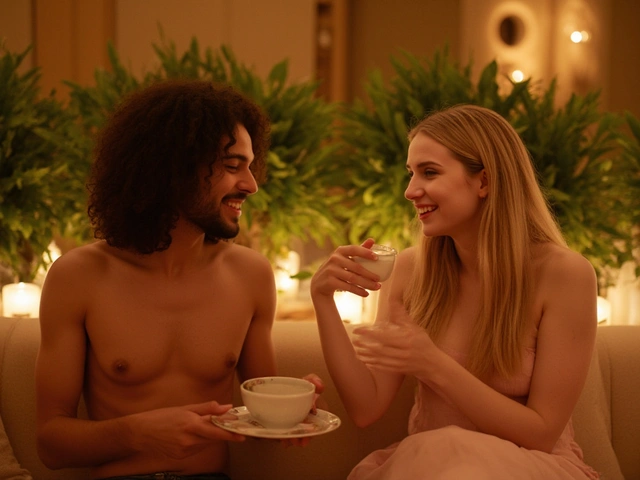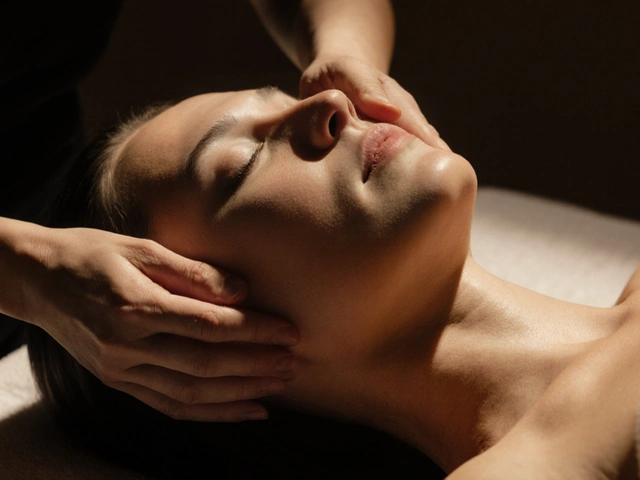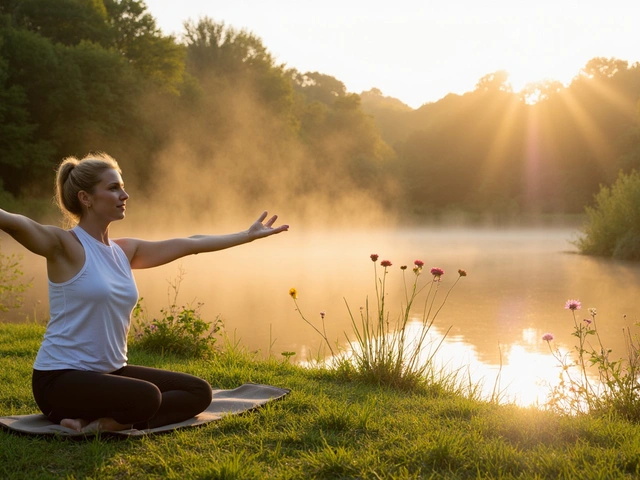Imagine lying on a mat on the floor, barefoot therapists moving around you like dancers, using their hands, elbows, knees, and even feet to guide your body through a sequence of stretches and pressure points. No oils. No music. Just breath, silence, and the quiet rhythm of someone who’s been doing this for generations. This isn’t just a massage-it’s a living tradition, passed down for over 2,500 years in Thailand. And if you’ve ever wondered why Thai massage feels so different from a Swedish or deep tissue session, the answer isn’t in the technique-it’s in the culture.
What Makes Thai Massage More Than Just a Bodywork Session
Thai massage, or Nuad Boran (which means "ancient massage" in Thai), isn’t designed to relax your muscles alone. It’s a holistic healing system rooted in Ayurveda, Buddhist spiritual practices, and traditional Chinese medicine. Unlike Western massages that focus on soft tissue, Thai massage works on energy lines called sen-similar to meridians in acupuncture. There are 72,000 of these lines in the body, but practitioners focus on ten main ones that connect vital points from your toes to your forehead.
You don’t just get pressed on. You’re pulled, stretched, rocked, and compressed. It’s like yoga with a partner. And that’s intentional. The goal isn’t just to release tension-it’s to unblock energy flow, restore balance, and awaken the body’s natural healing power. In Thailand, this isn’t a luxury spa treat. It’s medicine. People go for back pain, headaches, insomnia, even digestive issues. Grandmothers get it after harvest season. Taxi drivers get it before their shift. Monks have practiced it for centuries as part of their daily discipline.
Why Thai Massage Is Tied to Thai Identity
Thai massage isn’t just a technique-it’s a cultural artifact. It’s taught in temples, not just massage schools. The most respected masters still train in Wat Pho, the Temple of the Reclining Buddha in Bangkok, where the first formal school of Thai massage was established in the 18th century under King Rama III. The walls of Wat Pho are covered with 72 stone carvings showing exactly how to perform each movement. These aren’t just instructions-they’re sacred texts.
Every Thai massage therapist, even the ones in beachside huts in Phuket, learns the same foundational sequences. They start with respect: bowing to the Buddha, the teacher, and the client. They recite a traditional prayer before each session, asking for guidance and healing energy. This isn’t performance. It’s ritual. And that’s why you can’t replicate Thai massage fully outside Thailand. You can copy the moves, but not the intention.
Thai culture doesn’t separate spirituality from daily life. A massage isn’t a service-it’s an act of compassion. The therapist doesn’t just work on your body. They hold space for your stress, your fatigue, your pain. That’s why many Thais say, "You don’t just feel better after a Thai massage-you feel lighter in your soul."
How It’s Different From Other Massage Styles
Let’s be clear: Thai massage is not Swedish massage with more stretching. It’s not deep tissue with yoga poses tacked on. Here’s how it stacks up:
| Aspect | Thai Massage | Swedish Massage | Deep Tissue Massage |
|---|---|---|---|
| Setting | Mat on floor, fully clothed | Table, nude under towel | Table, nude under towel |
| Technique | Compression, rocking, passive stretching | Gliding strokes, kneading | Slow, focused pressure on deep layers |
| Energy Focus | Sen lines, chi flow | None | None |
| Therapist’s Tools | Hands, elbows, knees, feet | Hands only | Hands, forearms |
| Duration | 60-120 minutes | 60-90 minutes | 60-90 minutes |
| After Effects | Clear-headed, energized | Relaxed, sleepy | Sore, then relieved |
You’ll notice something missing: oils. Thai massage uses no lotions or scents. That’s because it’s not about scent or ambiance-it’s about direct, grounded contact. The therapist uses their body weight, not just their hands, to apply pressure. That’s why it can feel intense. But it’s never about pain. It’s about finding the edge of discomfort and breathing through it. Many first-timers say, "I thought it would hurt," but end up saying, "I didn’t realize I was holding my breath for years."

Where to Experience Authentic Thai Massage in Thailand
If you’re planning a trip to Thailand, don’t just book the first massage at your resort. Seek out the real thing. In Chiang Mai, head to the old temple districts where monks still teach apprentices. In Bangkok, visit Wat Pho’s massage school-it’s the birthplace of modern Thai massage. You can even take a one-day course there and learn the basics.
In smaller towns like Sukhothai or Ayutthaya, you’ll find family-run shops where the owner’s grandmother taught them the moves. These places don’t have websites. They have chalkboards outside with prices written in Thai. Ask locals: "Where do you go?" That’s your best tip.
Street-side Thai massage isn’t just cheap-it’s cultural. For 300-500 baht (about $8-$14 USD), you can get a full 60-minute session on a mat under a tarp, with the sound of motorbikes and street vendors in the background. It’s messy. It’s real. And it’s exactly how it’s been done for centuries.
What Happens During a Typical Session
You’ll be asked to wear loose, comfortable clothing-no underwear required, but most people wear shorts and a tank top. You lie on a mat on the floor. The therapist doesn’t ask if you want "more pressure." They feel your body’s resistance. They adjust on the spot.
The session usually starts at your feet. They’ll stretch your toes, press along your arches, then work up your calves. No talking. Just slow, deliberate movement. By the time they reach your shoulders, you’re already breathing deeper than you have in months.
They’ll pull your arms like a puppet, twist your spine gently, and use their knee to press along your lower back. You might feel a pop. You might gasp. You might cry. It’s not unusual. People release emotions they didn’t know they were holding.
At the end, they’ll place their hands gently on your forehead and heart. No words. Just presence. That’s when you realize-you didn’t just get a massage. You got a moment of stillness in a world that never stops moving.
How Much Does It Cost in Thailand?
Prices vary wildly depending on where you are. In tourist areas like Pattaya or Phuket, resorts charge 1,500-2,500 baht ($40-$70 USD) for a 90-minute session. But walk five blocks away, and you’ll find a local shop charging 250 baht ($7 USD) for the same length.
At Wat Pho, the official school, it’s 800 baht ($22 USD) for 90 minutes, and you’re getting a lesson from a certified master. That’s the value. You’re not just paying for time-you’re paying for lineage.
Most places don’t take credit cards. Cash only. Bring small bills. And tip if you feel moved to. It’s not expected, but it’s deeply appreciated.
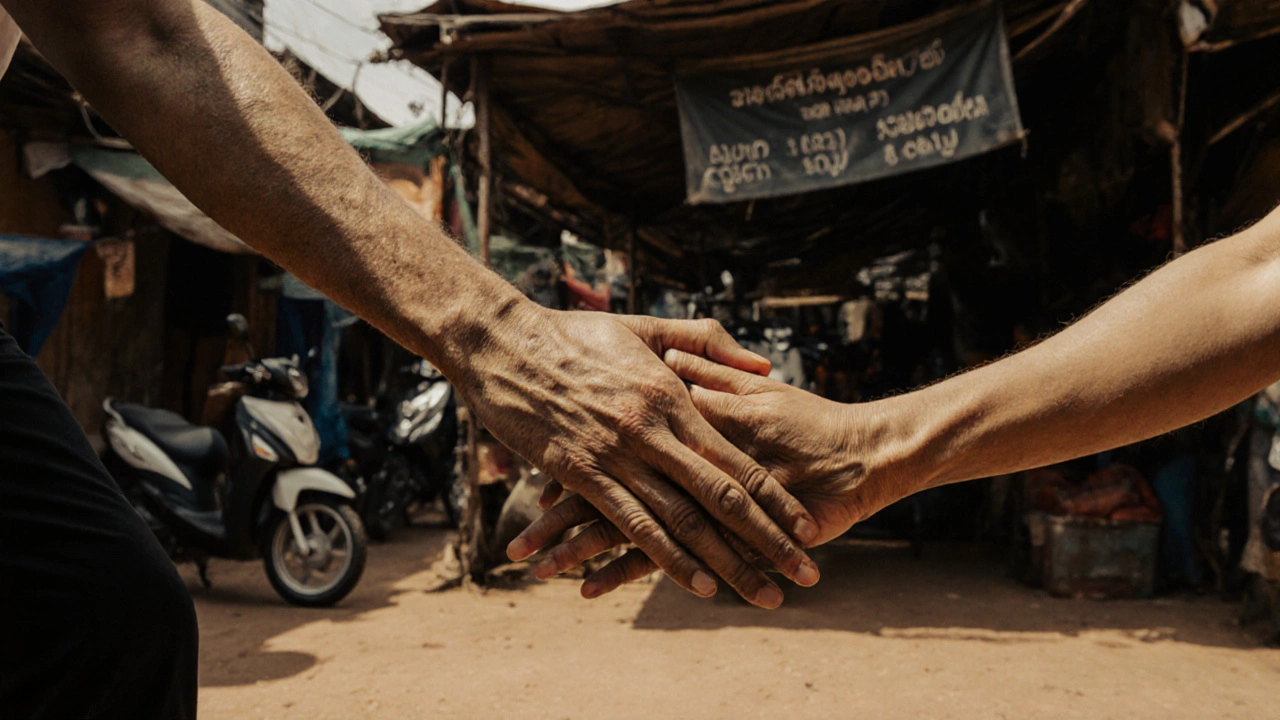
What You Should Know Before Your First Session
Thai massage isn’t for everyone-but it’s for more people than you think. Here’s what to watch for:
- Don’t go on a full stomach. Wait at least two hours after eating.
- Tell your therapist if you have injuries, recent surgeries, or are pregnant. They can modify the session.
- It’s okay to say "too much" or "slower." You’re not being rude-you’re helping them help you.
- Afterward, drink water. Your body is releasing toxins and needs to flush them out.
- Don’t rush. Give yourself an hour to sit quietly after. You might feel dizzy or emotional. That’s normal.
Some people feel sore the next day. That’s not a bad sign-it means your body is adjusting. Think of it like a workout you didn’t know you needed.
Why This Tradition Is Disappearing-And Why It Matters
Here’s the hard truth: Thai massage is under threat. Younger Thais are leaving the trade. It’s physically demanding. The pay is low. Many prefer to work in hotels or as tour guides. The government has tried to protect it by listing Thai massage as a national intangible cultural heritage in 2019. But laws don’t save traditions-people do.
Every time someone chooses a cheap, mechanized "Thai massage" in a mall with robotic machines and loud music, they’re not just getting a bad experience-they’re eroding the soul of the practice.
When you sit down for an authentic Thai massage, you’re not just a customer. You’re a keeper of culture. You’re honoring centuries of wisdom that survived war, colonization, and modernization. You’re saying: "This matters. I see it. I feel it. I won’t let it vanish."
Frequently Asked Questions
Is Thai massage painful?
It can feel intense, but it shouldn’t hurt. The pressure is deep, but the goal is to find your edge-not break through it. If you feel sharp pain, speak up. Good therapists adjust instantly. Most people say it feels like a "good hurt"-like your body is finally being released from years of tension.
Do I need to be flexible for Thai massage?
No. Thai massage is for people of all shapes and mobility levels. The therapist works with your body as it is, not how it "should" be. If you can’t touch your toes, that’s fine. They’ll stretch you gently, within your range. Many people with stiff backs or arthritis find it surprisingly helpful.
Can I get Thai massage outside Thailand?
Yes-but be picky. Many places in the West call any stretching session "Thai massage." Look for therapists trained in Thailand, especially those who mention Wat Pho or have studied under a lineage holder. Ask if they learned from a Thai master. If they say "I took a weekend course," walk away.
Is Thai massage spiritual?
It doesn’t have to be-but it often is. The practice comes from Buddhist traditions of compassion and mindfulness. Many therapists pray before starting. The silence, the rhythm, the focused touch-it creates a meditative space. You don’t need to believe in anything to feel it. But if you’re open, you might leave feeling more connected than when you arrived.
How often should I get Thai massage?
Once a month is ideal for maintenance. If you’re dealing with chronic pain or stress, twice a month helps. Athletes and manual laborers often go weekly. But listen to your body. If you feel energized and clear after, you’re ready for the next one. If you feel drained, wait longer.
Thai massage isn’t just something you do. It’s something you experience. And once you’ve felt it-really felt it-you’ll understand why it’s not just Thailand’s gift to the world. It’s Thailand’s soul, pressed into every stretch, every breath, every quiet moment between therapist and client.
